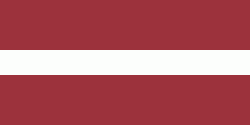Mērsrags Municipality (Mērsraga Novads)
Mērsrags Municipality (Mērsraga novads) is a former administrative unit of Latvia, formed in 2011. As of 2020, the population was 1,407.
In 2009, Roja Municipality was formed by merging Mērsrags Parish and Roja Parish, both at the coast of the Baltic Sea. In January 2010, the residents of Mērsraga in a general meeting decided to withdraw from the new municipality and create an independent Mērsrags municipality. In September 2010, the national parliament Saeima in a first reading supported a change of the law of administrative territories and populated areas for the establishment of Mērsrags municipality. Separate Roja and Mērsrags municipality council elections took place on 18 December 2010. Officially, Mērsrags Municipality came into life on 3 January 2011.
On 1 July 2021, Mērsrags Municipality ceased to exist and its territory was merged into Talsi Municipality.
In 2009, Roja Municipality was formed by merging Mērsrags Parish and Roja Parish, both at the coast of the Baltic Sea. In January 2010, the residents of Mērsraga in a general meeting decided to withdraw from the new municipality and create an independent Mērsrags municipality. In September 2010, the national parliament Saeima in a first reading supported a change of the law of administrative territories and populated areas for the establishment of Mērsrags municipality. Separate Roja and Mērsrags municipality council elections took place on 18 December 2010. Officially, Mērsrags Municipality came into life on 3 January 2011.
On 1 July 2021, Mērsrags Municipality ceased to exist and its territory was merged into Talsi Municipality.
Map - Mērsrags Municipality (Mērsraga Novads)
Map
Country - Latvia
 |
 |
| Flag of Latvia | |
After centuries of Teutonic, Swedish, Polish-Lithuanian and Russian rule, which was mainly executed by the local Baltic German aristocracy, the independent Republic of Latvia was established on 18 November 1918 when it broke away from the German Empire and declared independence in the aftermath of World War I. However, by the 1930s the country became increasingly autocratic after the coup in 1934 establishing an authoritarian regime under Kārlis Ulmanis. The country's de facto independence was interrupted at the outset of World War II, beginning with Latvia's forcible incorporation into the Soviet Union, followed by the invasion and occupation by Nazi Germany in 1941, and the re-occupation by the Soviets in 1944 to form the Latvian SSR for the next 45 years. As a result of extensive immigration during the Soviet occupation, ethnic Russians became the most prominent minority in the country, now constituting nearly a quarter of the population. The peaceful Singing Revolution started in 1987, and ended with the restoration of de facto independence on 21 August 1991. Since then, Latvia has been a democratic unitary parliamentary republic.
Currency / Language
| ISO | Currency | Symbol | Significant figures |
|---|---|---|---|
| EUR | Euro | € | 2 |
| ISO | Language |
|---|---|
| LV | Latvian language |
| LT | Lithuanian language |
| RU | Russian language |















